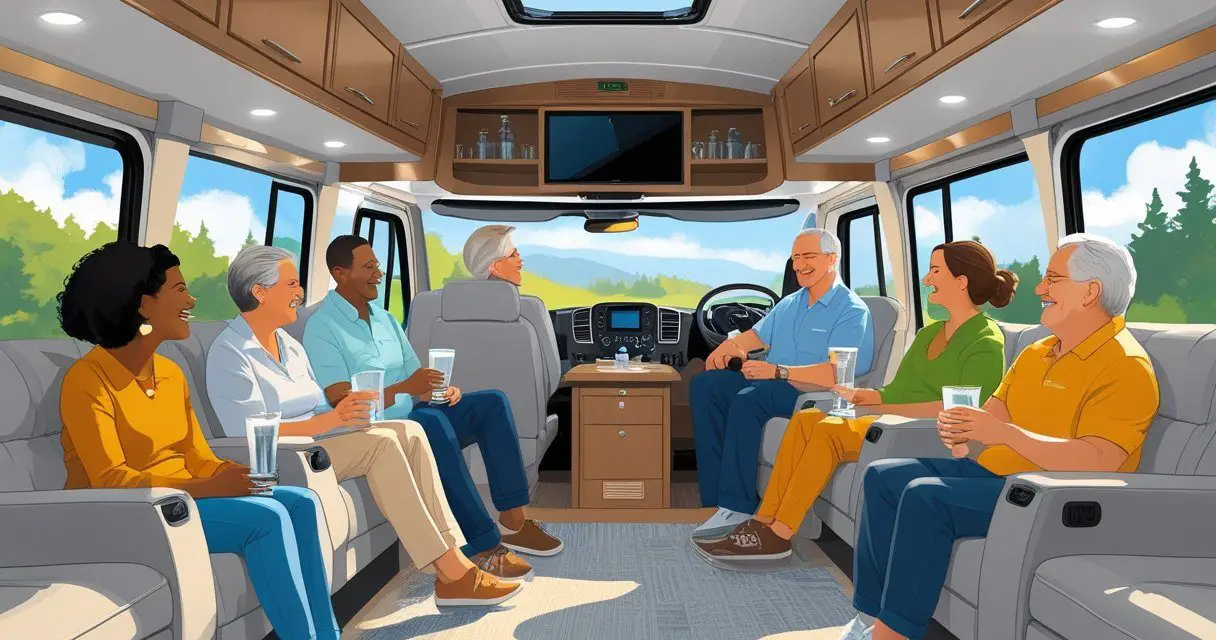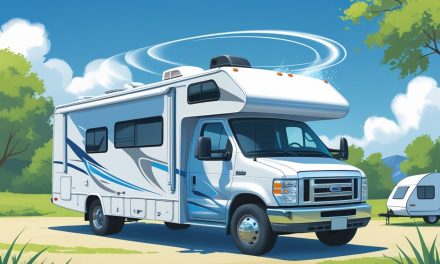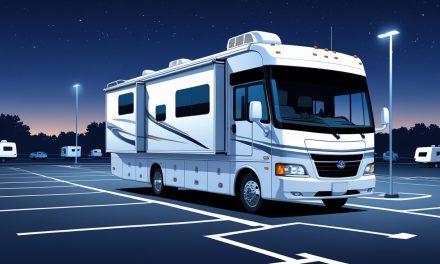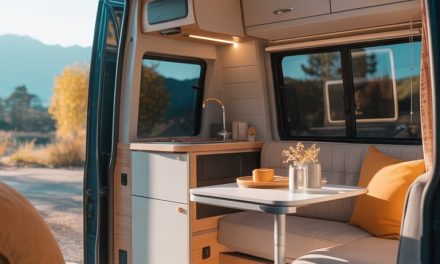Would you like to save this article?
The question of whether RV passengers can drink alcohol while traveling is more complicated than a simple yes or no answer. Most states prohibit passengers from drinking alcohol in a moving RV, but several states do allow it with specific restrictions and conditions.
The rules vary significantly from state to state. It’s essential for RV travelers to research the laws in each state they plan to visit.
Unlike regular passenger vehicles, RVs present unique legal considerations due to their dual nature as both a motor vehicle and a living space. Some states recognize the “living quarters” exception, which allows passengers to consume alcohol in the main living area of an RV while it remains in motion.
These exceptions often come with strict requirements about RV size, passenger location, and distance from the driver. Open container laws, state-specific regulations, and the differences between drinking in a moving RV versus a parked one add to the complexity.
Key Takeaways
- Most states prohibit passengers from drinking alcohol in moving RVs, though some states allow it with specific restrictions
- State laws vary significantly regarding open containers and alcohol consumption in RV living quarters versus driving areas
- Violating RV alcohol laws can result in fines and legal consequences, making research of state-specific regulations essential before travel
Understanding Open Container Laws in RVs
Open container laws create confusion for RV travelers because these vehicles serve as both transportation and temporary homes. States define passenger areas differently for motorhomes, leading to varying rules about where alcohol can be present or consumed.
What Open Container Laws Mean for RVs
Open container laws prohibit unsealed alcohol containers in a vehicle’s passenger area while driving. These laws apply to any bottle, can, or container that has been opened, even if no one is actively drinking.
The challenge with RVs comes from their dual nature. Unlike regular cars, motorhomes have living spaces with kitchens, bathrooms, and sleeping areas.
Most states treat open container violations as infractions or misdemeanors. Fines typically range from $50 to $500 for first offenses.
Key points about RV open container laws:
- Violations don’t require active drinking
- Open containers within reach of occupants can trigger citations
- RVs create unique legal situations due to their living quarters
- Penalties vary but usually involve fines
The driver always faces restrictions on alcohol consumption regardless of state laws. This prohibition remains consistent across all jurisdictions.
How Open Container Laws Differ by State
States take vastly different approaches to open containers in RVs. Some allow passengers to drink in living quarters while others prohibit open alcohol anywhere in the vehicle.
States that generally allow passenger consumption in RV living areas:
- Texas
- Missouri
- Montana
- Connecticut
- Rhode Island
Mississippi stands out as the only state without general open container laws.
States with strict prohibitions:
- Alaska
- Many northeastern states
- Various other jurisdictions that don’t distinguish between cab and living areas
Some states add size requirements. Certain jurisdictions only allow open containers in motorhomes over 21 feet in length.
Florida creates additional complexity by considering vehicle size in their enforcement decisions. Smaller motorhomes face stricter rules than larger ones.
Distinctions Between Driver and Passenger Areas
The legal separation between driver cabs and living quarters determines whether open containers are permitted. States that recognize this distinction treat the living area differently from the driving compartment.
Living quarters typically include:
- Kitchen with refrigerator and sink
- Bathroom facilities
- Sleeping accommodations
- Separate seating areas
When states legally separate these areas, passengers may possess and consume alcohol in living quarters while the RV moves. Open containers must stay completely out of the driver’s cab area.
States without this distinction consider the entire RV interior as one passenger compartment. This means open container laws apply everywhere inside the vehicle.
The driver’s area always remains off-limits for open containers. This includes the driver’s seat, dashboard area, and any space within the driver’s immediate reach.
Legalities of Drinking in an RV While Moving
The laws around drinking in an RV while driving vary greatly by state and depend on whether you’re the driver or a passenger. Most states have strict rules about open containers near the driver, but some allow passengers to drink in the living areas of larger RVs.
Laws Affecting Passengers Versus Drivers
Drivers face strict alcohol prohibition while operating any RV or motorhome. No state allows drivers to consume alcohol while the vehicle is moving.
Passengers have different rules depending on the state. The driver cannot have any open containers within reach while driving.
Many states treat RV passengers differently than car passengers. The key factor is whether the alcohol is in the living quarters versus the driving area.
Open container laws usually focus on accessibility to the driver. If passengers can drink in a separate living area that’s not accessible to the driver, some states allow this.
Storage rules matter too. Unopened alcohol in refrigerators or locked cabinets is generally legal in most states while moving.
State Variations in Passenger Alcohol Consumption
Several states allow passenger drinking in RV living quarters while moving. Alaska, Connecticut, Delaware, Mississippi, and Rhode Island permit this practice with restrictions.
Texas has clear rules allowing passengers to consume alcohol in RV living quarters during travel. The living area must be separate from the driving area.
Most states prohibit all alcohol consumption in moving vehicles, including RVs. These states require all open containers to be stored away from passengers and drivers.
Penalties vary significantly by state. Some states impose fines starting at $100 for first offenses. Others may suspend driving privileges or impose jail time for violations.
Research specific state laws before traveling. What’s legal in one state may result in serious penalties in another.
Length and Design of RV: Does It Matter?
RV size affects legality in some states. Louisiana and Florida require RVs to be at least 21 feet long before passengers can drink in living areas while moving.
Living quarters must be separate from the driving area. The RV needs permanent living facilities like beds, kitchens, and bathrooms to qualify for passenger drinking exceptions.
Motorhomes versus towables have different rules. Fifth wheels and travel trailers generally cannot have passengers inside while moving, making drinking laws irrelevant.
Design features matter for compliance. RVs need clear separation between driver areas and living spaces.
The RV must function as both a vehicle and temporary home to qualify for special alcohol rules in permissive states.
State-Specific Regulations Impacting RV Passengers
States handle open container laws differently when it comes to RVs, creating a patchwork of regulations across the country. Some states allow passengers to drink in the living quarters while others ban alcohol throughout the entire vehicle.
Notable States That Allow Passenger Drinking
Texas leads the way with clear exceptions for RV passengers. The state allows alcohol consumption in the “living quarters of a motorhome, recreational vehicle, or self-contained camper.”
Passengers can drink as long as they stay outside the driving cab area. Missouri and Montana have similar laws that permit passenger drinking in RV living areas.
These states legally separate the driver’s cab from spaces with amenities like toilets, sleeping areas, and kitchens. Mississippi stands out as the only state without general open container laws.
This makes it the most permissive state for RV alcohol consumption. Connecticut and Rhode Island take a broader approach.
They allow passenger consumption in any vehicle, which extends to RVs by default.
Strict States and Complete Prohibitions
Alaska treats the entire RV as one passenger compartment. The state provides no exceptions for living quarters, making any open alcohol container illegal while driving.
Ohio maintains strict rules with very limited exceptions. Passengers can only drink alcohol in chauffeured limousines, leaving RV passengers without legal drinking options.
Most other states fall into this restrictive category. They apply open container laws to the entire RV interior while the vehicle is on public roads.
Violations typically result in infractions or misdemeanor charges. Penalties can include fines and other legal consequences.
Drinking in the Living Quarters vs. Driving Area
The key difference lies in how states define separate areas within an RV, with many allowing alcohol consumption in living quarters while strictly prohibiting it near the driver.
Legal Exceptions for Living Quarters
Many states create legal distinctions between an RV’s driving cab and living quarters. This separation allows passengers to drink alcohol in the rear living area while the vehicle moves.
Texas permits drinking in the living quarters of motorhomes, recreational vehicles, and self-contained campers. The law requires passengers and open containers to stay outside the driving cab area.
Missouri and Montana have similar laws that accommodate passenger consumption in RV living areas. These states treat the living quarters as separate from the passenger compartment under open container laws.
The living quarters must include specific amenities to qualify for this exception:
- Toilet facilities
- Sleeping accommodations
- Kitchen with refrigerator and sink
California takes a different approach by not prosecuting passengers for open containers in RVs. However, the driver still cannot consume alcohol while operating the vehicle.
Some states base exceptions on RV length. Florida only allows passenger drinking in motorhomes that are 21 feet or longer.
Rules for Storing and Securing Alcohol
States without living quarter exceptions treat the entire RV interior as one passenger compartment. In these locations, open container laws apply everywhere inside the vehicle while on public roads.
Alaska does not provide exceptions for RV living quarters. The entire vehicle falls under passenger compartment rules, making any open alcohol container illegal while moving.
When exceptions don’t apply, alcohol must be stored in inaccessible areas during travel. This typically means:
- Sealed containers only
- Storage in exterior compartments
- Areas completely separated from passengers and driver
Violations usually result in infractions or misdemeanor charges. Penalties often include fines and potential license points depending on state laws.
Even in states with exceptions, the driver’s area remains strictly off-limits for alcohol consumption or open containers.
Consequences of Violating Alcohol Laws in an RV
Breaking alcohol laws while RVing can result in fines ranging from $100 to $250 or more, depending on the state. Passengers may face additional legal issues beyond basic open container violations.
Potential Penalties and Fines
Open container violations carry different penalties across states. North Carolina fines violators around $100 for first offenses.
California imposes fines of $250 or higher. Some states add jail time for repeat offenses.
The penalties increase when violations occur in moving vehicles versus parked RVs. Drivers face the harshest consequences under DUI and DWI laws.
These penalties include:
- Heavy fines ranging from hundreds to thousands of dollars
- License suspension or revocation
- Mandatory jail time
- Ignition interlock device requirements
RV drivers receive the same treatment as regular vehicle operators. Commercial driver’s license holders face additional career-threatening penalties.
Campground violations can result in immediate ejection from the property. Some state park systems require permits for alcohol consumption.
Maryland charges around $35 for these permits. Tennessee fees exceed $250.
Private campgrounds often ban guests permanently after alcohol-related incidents. This limits future camping options for RV travelers.
Additional Legal Risks for Passengers
Public intoxication charges apply even when passengers remain inside parked RVs on public property. These charges stick regardless of open container law exceptions for living quarters.
Local ordinances often prohibit alcohol consumption on public streets and rest stops. Being inside an RV does not provide automatic protection from these laws.
Disruptive behavior while intoxicated can lead to additional charges. Noise complaints at campgrounds frequently escalate into legal issues.
Park rangers and local police respond to these calls. Multiple violations across state lines create complex legal situations.
Passengers may face charges in different jurisdictions during single trips. Some states treat the entire RV as one vehicle compartment.
This means living quarter exceptions do not apply, making any open container illegal while driving.
Drinking in a Parked RV and Private Property Rules
The rules for drinking in an RV change completely once the vehicle stops moving and parks in a designated location.
Alcohol consumption shifts from traffic laws to property regulations that vary between private campgrounds and public lands.
When Is It Legal to Drink in a Stationary RV?
Drinking becomes legal in most parked RVs when the vehicle is off public highways and in approved camping areas.
All passengers and drivers can consume alcohol freely in these situations.
The key requirement is that the RV must be parked in a designated location rather than on public roads.
This includes private campgrounds, RV parks, and authorized camping spots on public lands.
Legal requirements for drinking in parked RVs:
- RV must be completely stopped and parked
- Location must be off public highways
- Site must allow overnight camping or RV parking
- Driver must stay within legal blood alcohol limits before driving again
Private property owners cannot restrict what happens inside an RV in most cases.
However, they can set rules about alcohol consumption in common areas around the campsite.
The driver bears responsibility for ensuring they meet legal blood alcohol concentration limits before operating the vehicle again.
Private Campgrounds vs. Public Land Regulations
Private campgrounds typically allow alcohol consumption within individual campsites and RVs. Most private RV parks permit adults to drink inside their vehicles and at their designated camping spots.
Private campground rules often include:
- Alcohol allowed inside RVs and at campsites
- Restrictions on drinking in common areas like pools or playgrounds
- Quiet hours that limit loud behavior
- Property owner rights to prohibit alcohol completely
Some private campgrounds ban alcohol entirely on their property. Owners have the legal right to prohibit alcohol usage completely, even inside parked RVs.
Public lands have stricter regulations that vary by managing agency. National and state parks often limit alcohol consumption to designated campsites only.
Common public land restrictions:
- Alcohol banned in public areas like trails and beaches
- Consumption limited to individual campsites
- Temporary alcohol bans during high-risk periods
- Stricter enforcement of public intoxication laws
Campers should check specific park regulations before arriving. Rules change between different public land areas.





